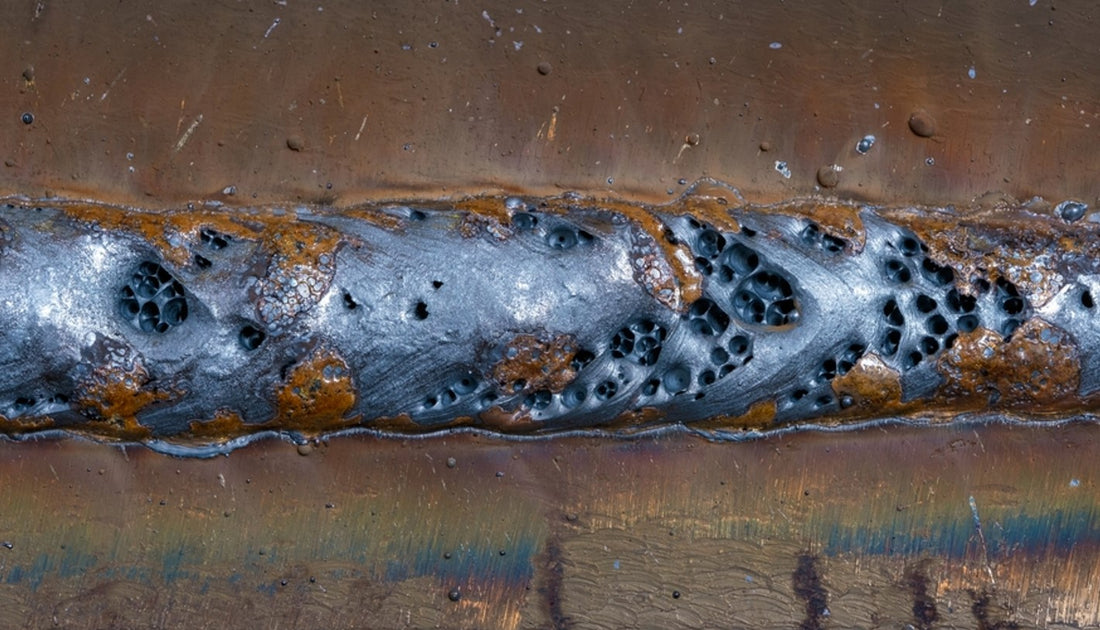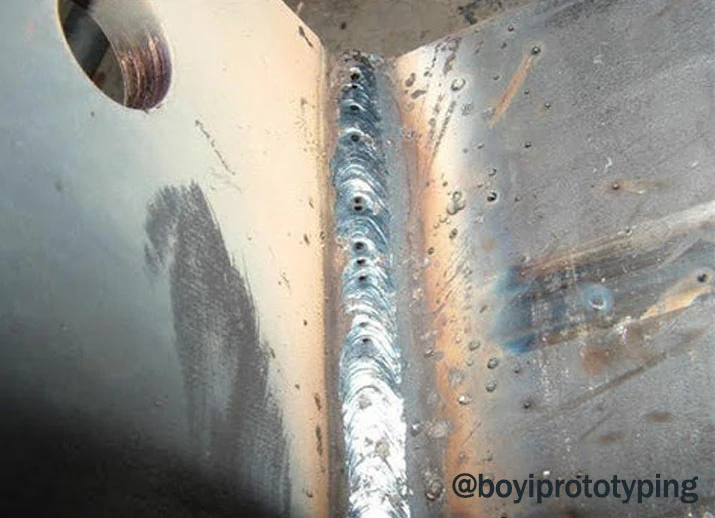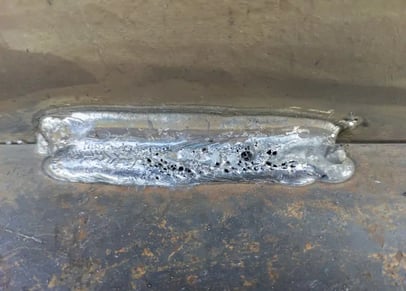Unwinding the Secret of Porosity in Welding: Tips for Decreasing Problems and Making Best Use Of Quality
In the complex world of welding, porosity stays a consistent challenge that can dramatically influence the top quality and honesty of welded joints. As we dive into the midsts of porosity in welding, revealing the keys to its avoidance and control will be paramount for experts seeking to master the art of high-quality weldments.
Recognizing Porosity in Welding
Porosity in welding, a common issue experienced by welders, refers to the visibility of gas pockets or spaces in the welded material, which can endanger the stability and top quality of the weld. These gas pockets are generally caught throughout the welding procedure because of numerous variables such as inappropriate protecting gas, infected base materials, or inaccurate welding specifications. The formation of porosity can weaken the weld, making it at risk to cracking and rust, eventually resulting in structural failings.
By identifying the value of preserving proper gas shielding, making certain the tidiness of base products, and optimizing welding settings, welders can significantly decrease the likelihood of porosity formation. In general, an extensive understanding of porosity in welding is crucial for welders to generate high-quality and resilient welds.

Usual Reasons For Porosity
When evaluating welding procedures for possible quality problems, understanding the typical reasons of porosity is vital for keeping weld stability and avoiding structural failings. Porosity, characterized by the existence of dental caries or gaps in the weld metal, can considerably compromise the mechanical buildings of a bonded joint. One usual root cause of porosity is improper shielding gas insurance coverage. Insufficient protecting gas flow rates or incorrect gas mixes can cause atmospheric contamination, causing porosity development.
In addition, welding at improper parameters, such as exceedingly high traveling rates or currents, can generate extreme turbulence in the weld swimming pool, trapping gases and creating porosity. By addressing these common causes with proper gas securing, product prep work, and adherence to optimal welding specifications, welders can lessen porosity and enhance the high quality of their welds.
Techniques for Porosity Prevention
Applying efficient safety nets is important in lessening the event of porosity in welding processes. One strategy for porosity avoidance is guaranteeing proper cleaning of the base steel before welding. Contaminants such as oil, grease, rust, and paint can bring about porosity, so extensive cleansing utilizing appropriate solvents or mechanical techniques is necessary.

Utilizing high-quality filler products and securing gases that are suitable for the base metal and welding procedure can significantly minimize the risk of porosity. Additionally, maintaining proper welding specifications, such as voltage, existing, travel rate, and gas flow rate, is important for porosity avoidance.
Additionally, employing appropriate welding methods, such as keeping a consistent traveling rate, electrode angle, and arc length, can assist stop porosity (What is Porosity). Ample training of welders to guarantee they adhere to finest techniques and top quality control procedures is also necessary in reducing porosity problems in welding

Ideal Practices for Top Quality Welds
One key practice is preserving correct cleanliness in the welding area. Extensively cleaning the workpiece and bordering location prior to welding can help mitigate these concerns.
An additional finest practice company website is to very carefully select the suitable welding criteria for the details materials being joined. Correct parameter selection guarantees optimum weld infiltration, fusion, and general quality. Using high-grade welding consumables, such as electrodes and filler steels, can significantly affect the final weld top quality.
Value of Porosity Control
Porosity control plays an essential function in ensuring the stability and high quality of welding joints. Porosity, characterized by the presence of tooth cavities or spaces within the weld steel, can considerably compromise the mechanical residential or commercial properties and structural honesty of her response the weld. click here now Too much porosity compromises the weld, making it much more at risk to cracking, rust, and general failure under functional loads.
Effective porosity control is necessary for keeping the desired mechanical properties, such as toughness, ductility, and sturdiness, of the bonded joint. What is Porosity. By reducing porosity, welders can enhance the overall high quality and dependability of the weld, making sure that it fulfills the performance needs of the desired application
Additionally, porosity control is important for achieving the preferred aesthetic appearance of the weld. Extreme porosity not just damages the weld yet additionally interferes with its aesthetic appeal, which can be essential in sectors where aesthetics are essential. Appropriate porosity control methods, such as utilizing the right securing gas, controlling the welding specifications, and ensuring appropriate cleanliness of the base products, are crucial for producing high-quality welds with marginal defects.

Conclusion
Finally, porosity in welding is a common defect that can compromise the high quality of the weld. By understanding the root causes of porosity and applying appropriate avoidance strategies, welders can decrease problems and accomplish higher high quality welds. It is important to regulate porosity in welding to ensure the stability and toughness of the final product. Carrying out finest techniques for porosity control is important for accomplishing optimum welding outcomes.